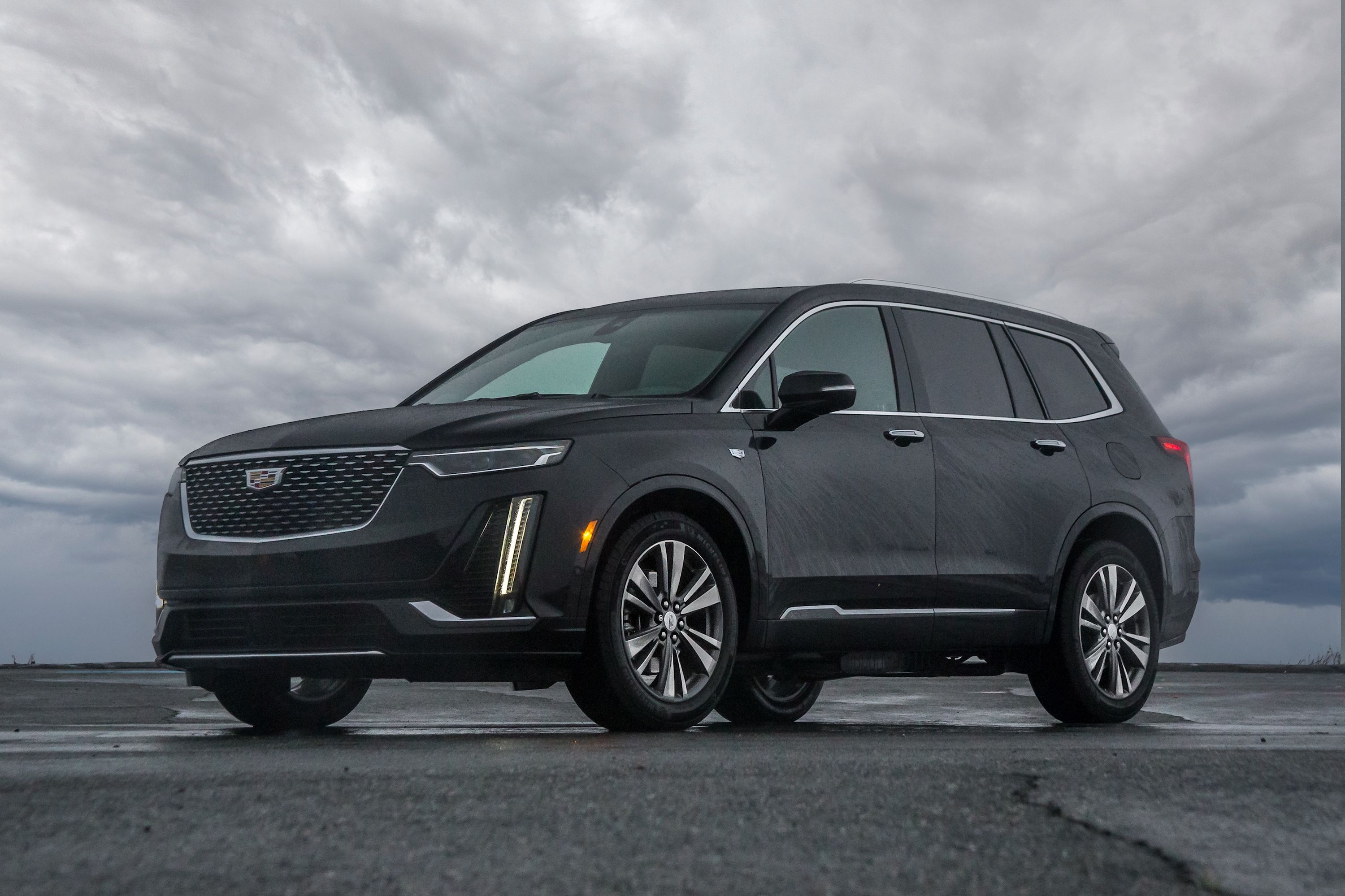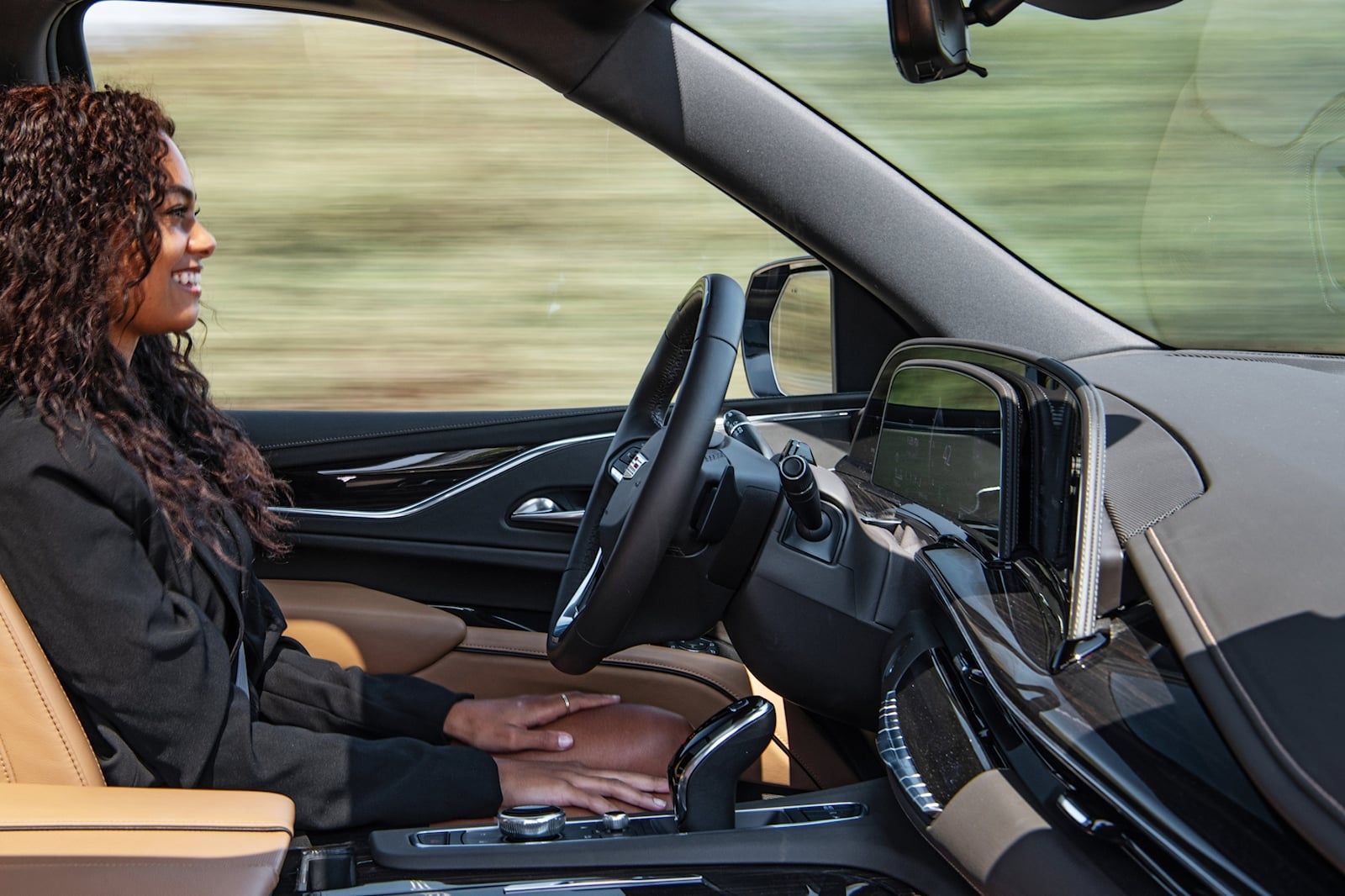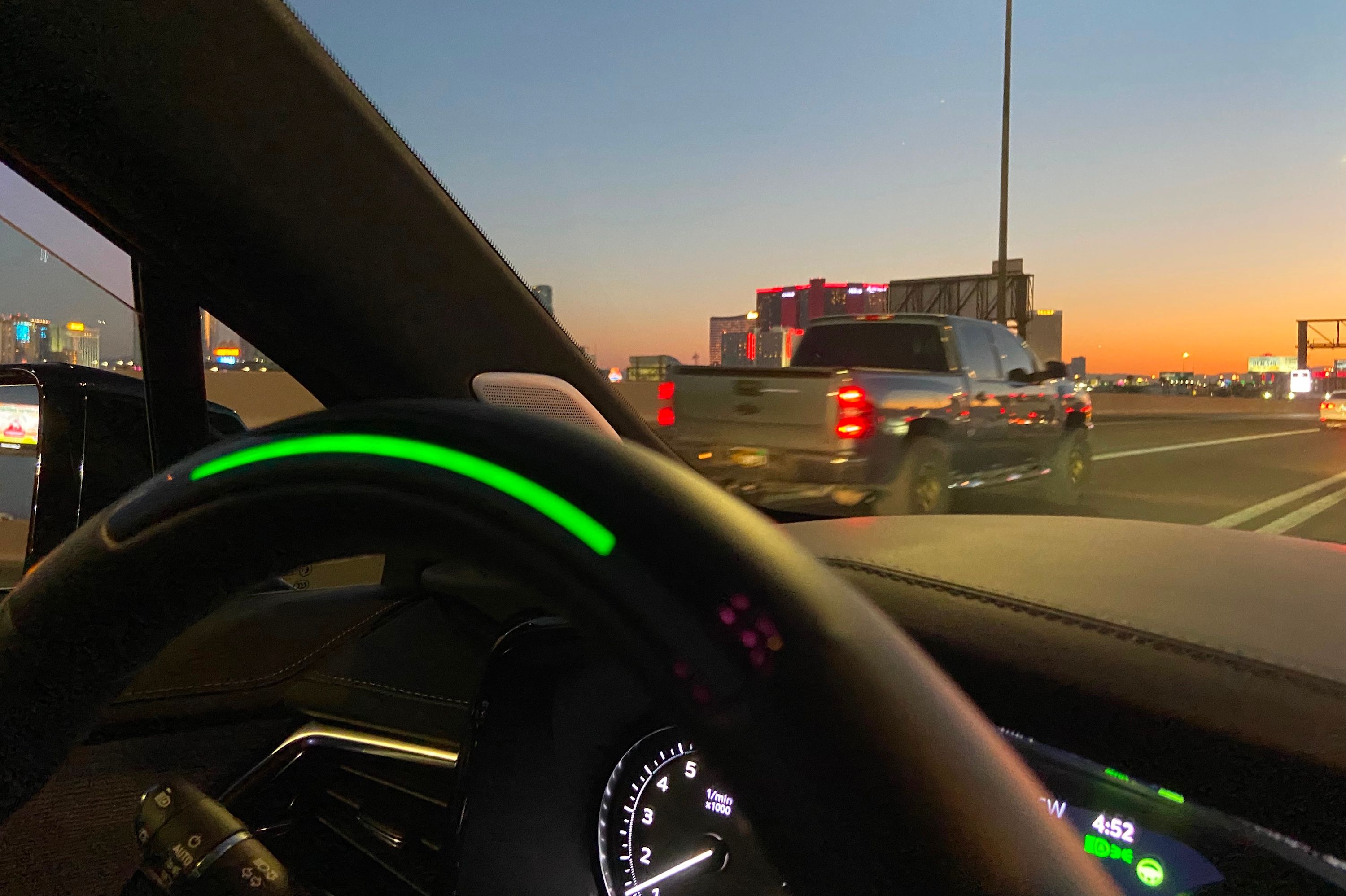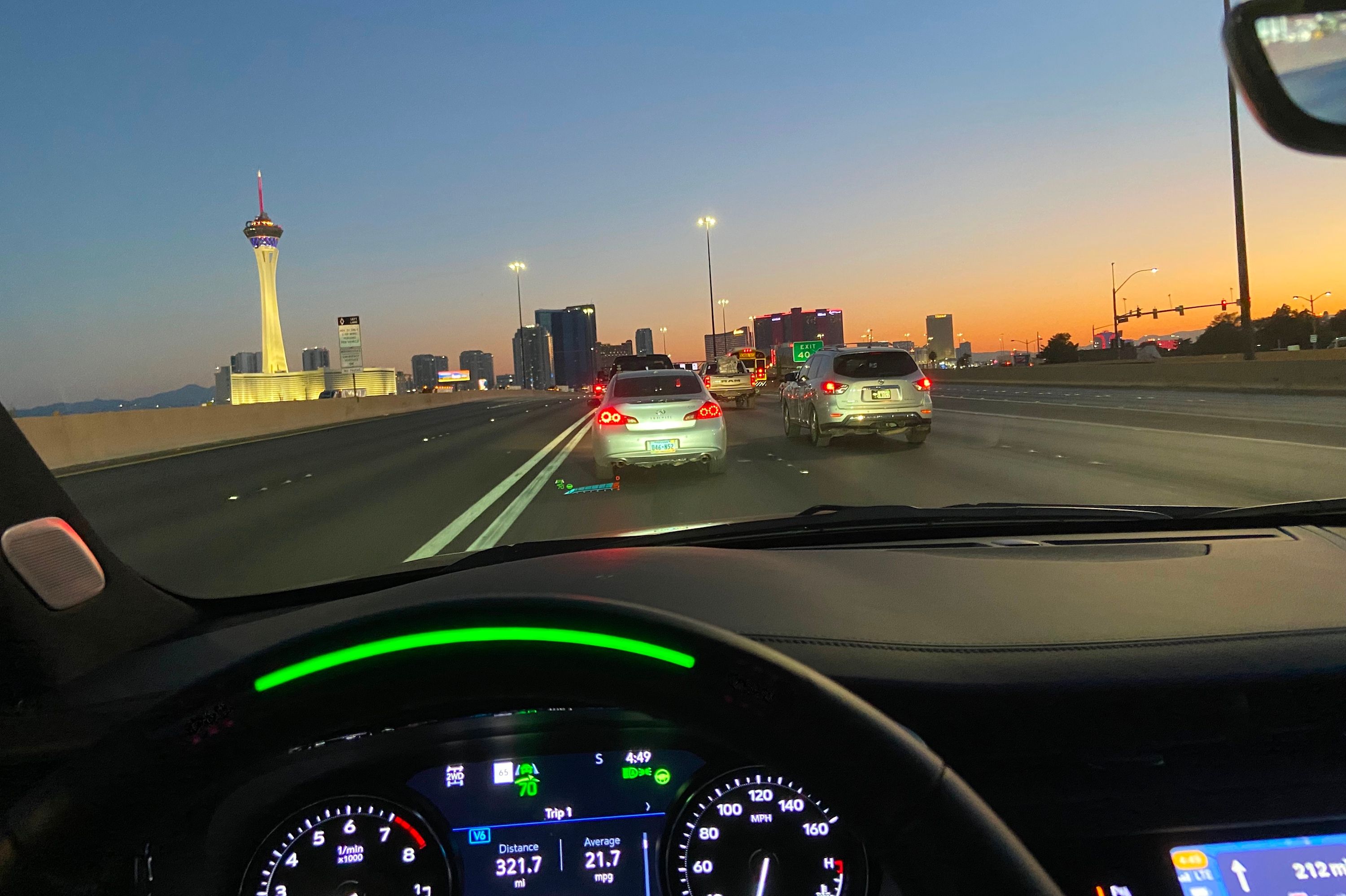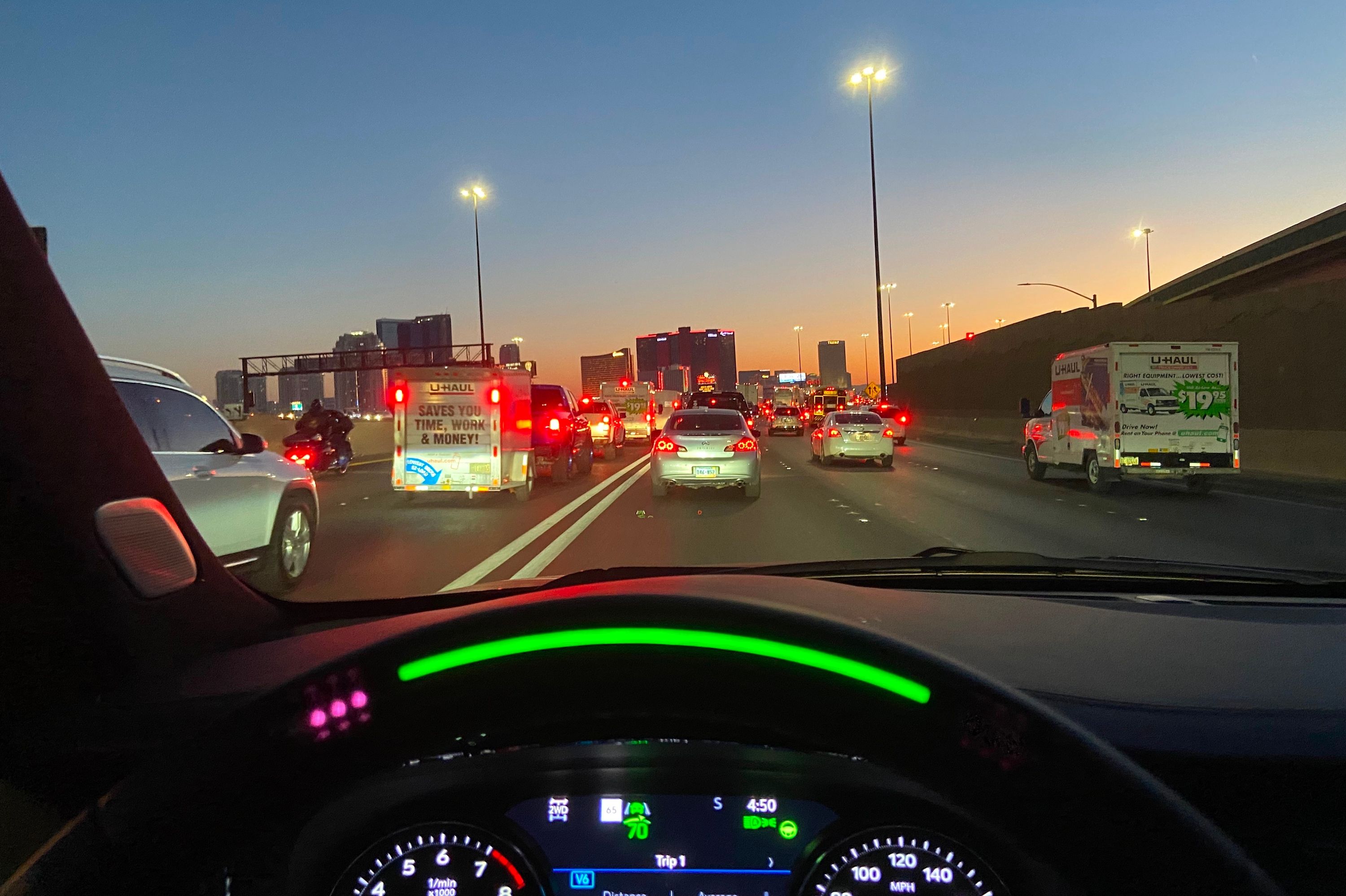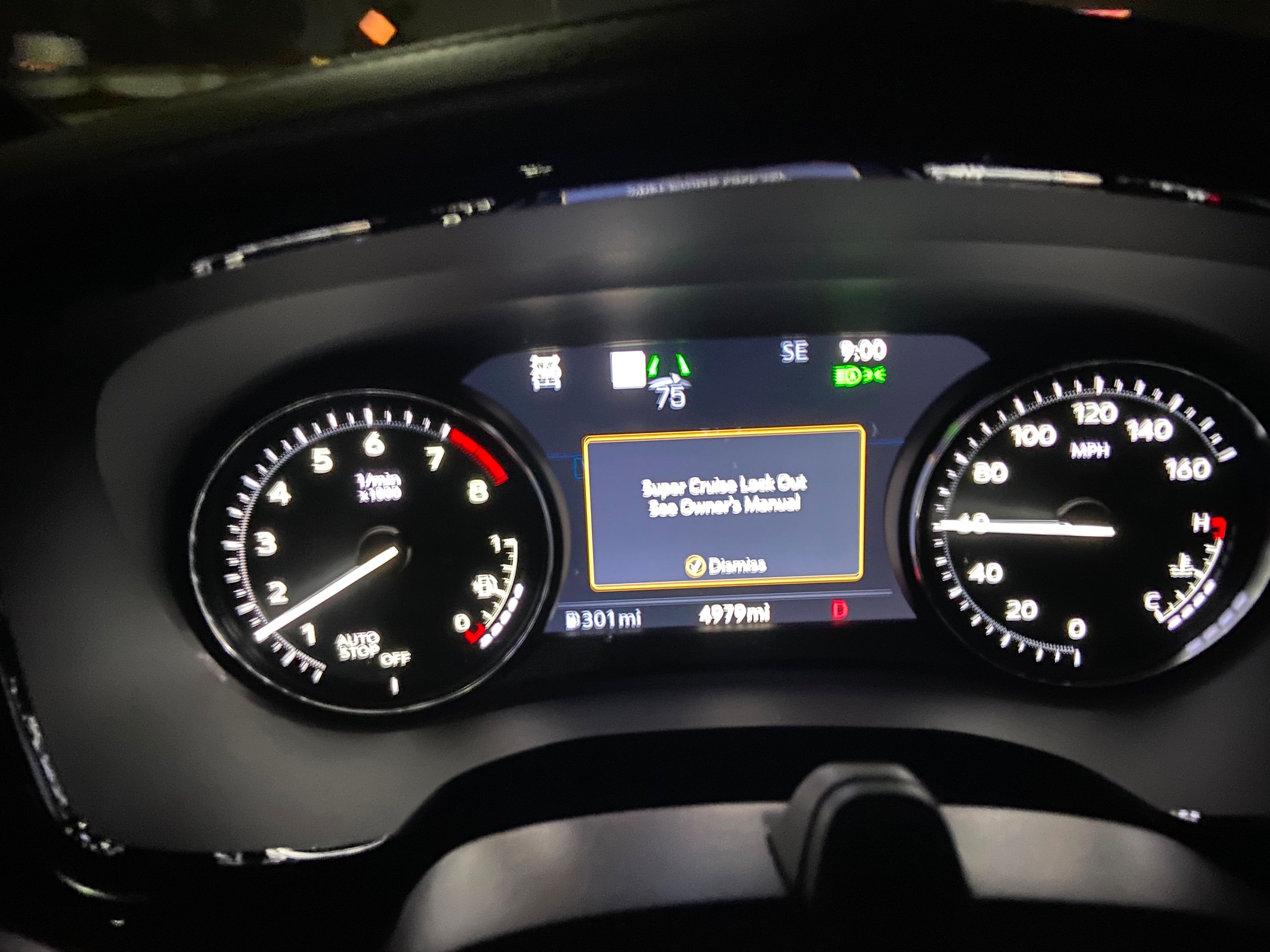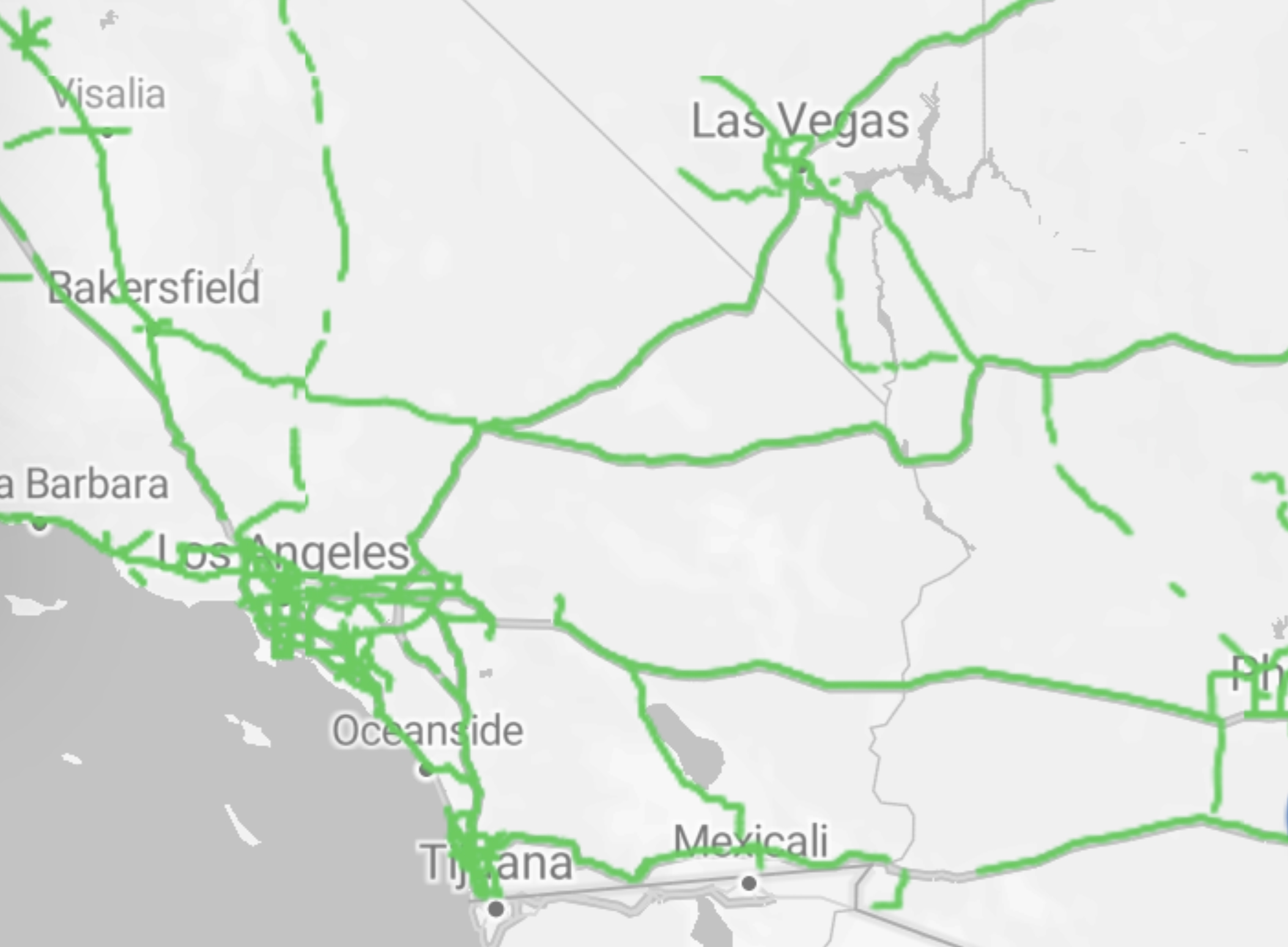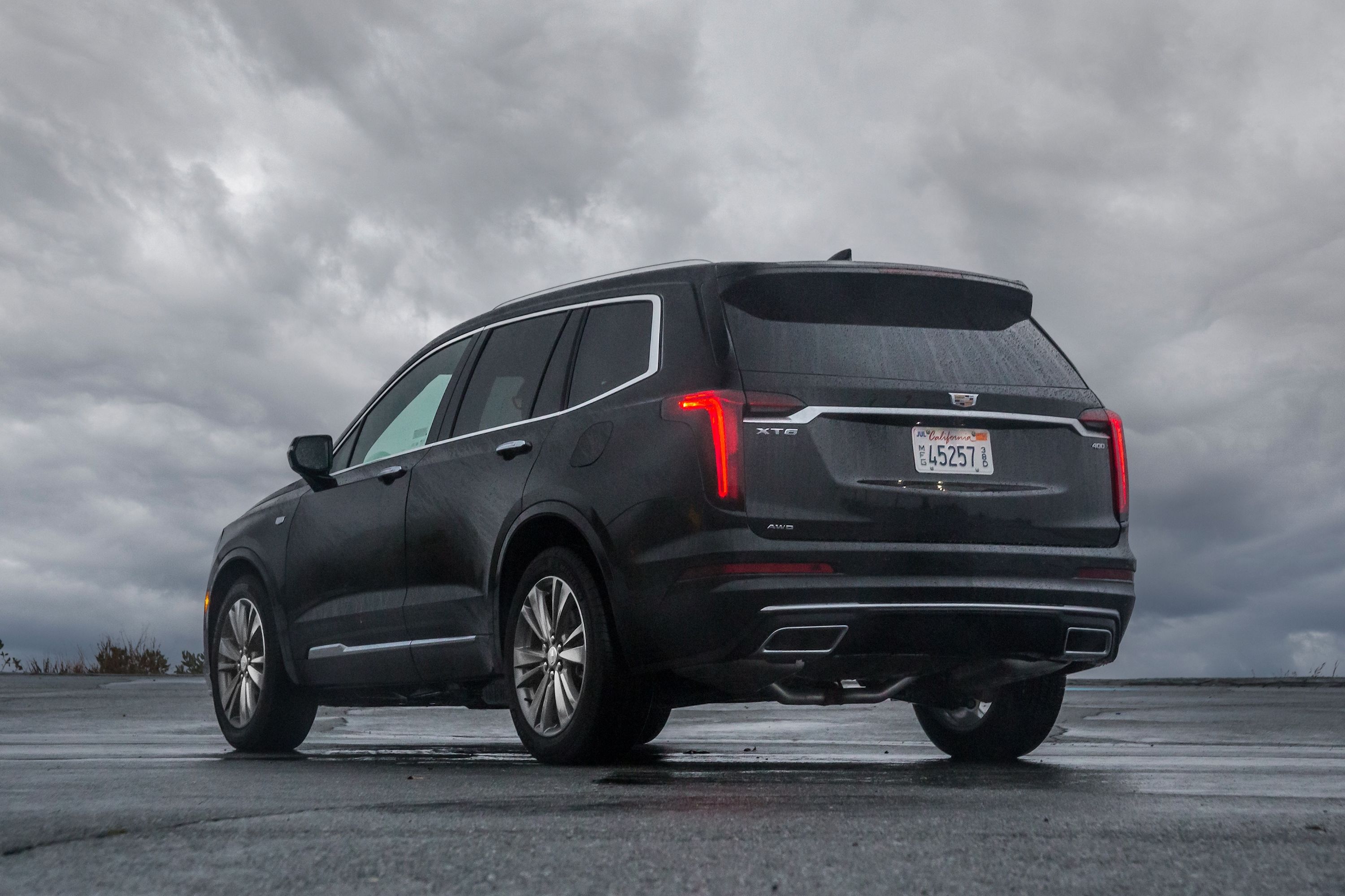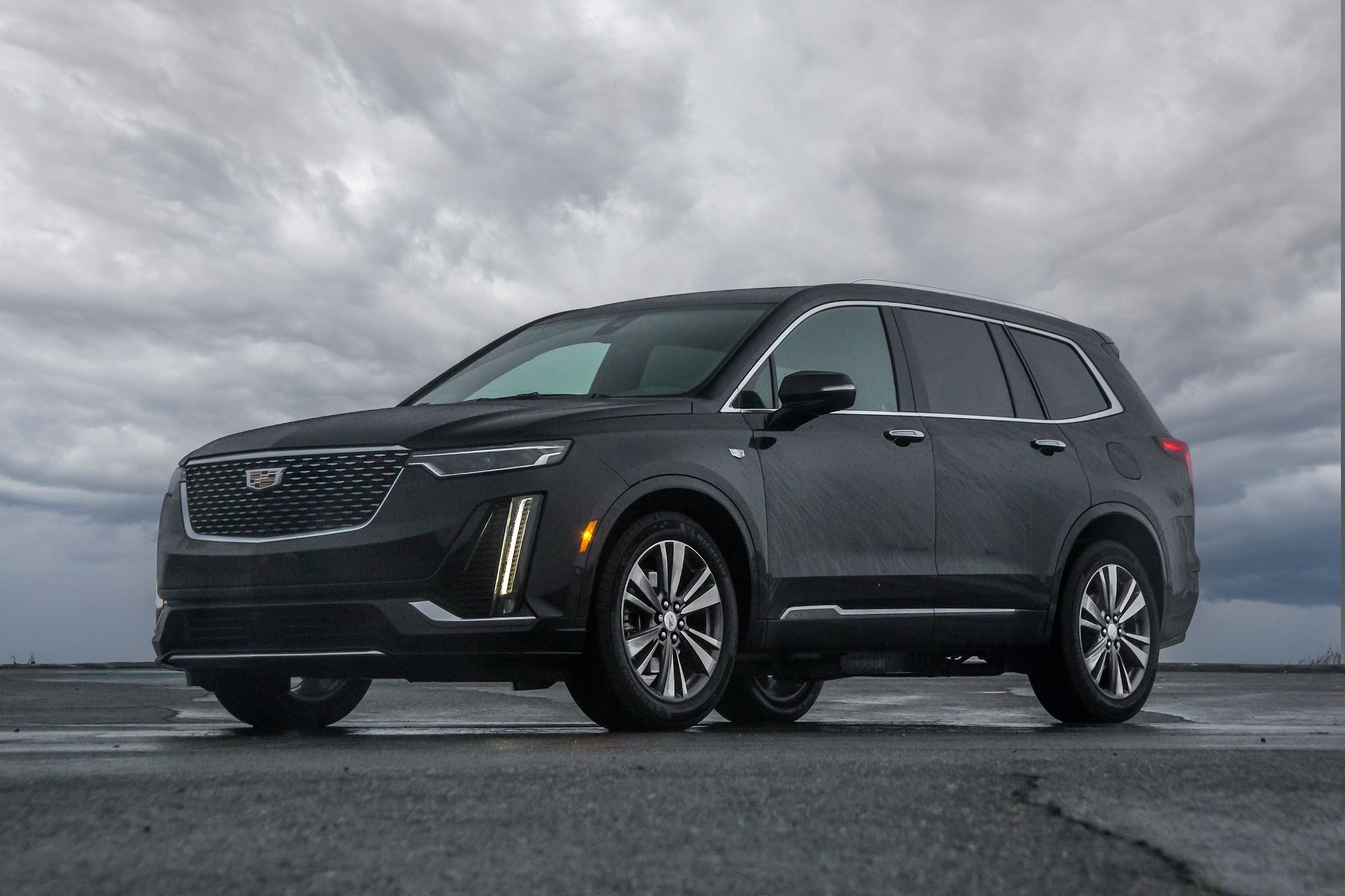
Fully autonomous vehicles on the road aren't going to happen for a long, long time.
The bubble has deflated, and expectations are finally starting to be tempered. What we are left with are either half measures or valuable driver aids. GM's Super Cruise system seeks to be a super helpful hands-free driver aid for the highway. In theory, you can join a freeway, get to speed, tap a button and the car will cruise along and take care of keeping a safe distance from a vehicle in front while steering for you. To oversimplify, it marries adaptive cruise control and a more robust version of lane-keep assist so the driver can dial back and be less stressed on the freeway. There are caveats and limitations, which we'll get into, but that's the overview.
We've experienced Super Cruise a few times but rarely take press cars on long freeway trips. So, when this writer was charged with driving to Las Vegas to drive McLaren's new supercar, Cadillac was good enough to supply an XT6 so we could spend quality time with Super Cruise on the four-and-a-half-hour road trip.
The trip from LA to Las Vegas is simple. You prepare yourself for driving in a straight line on the I-15 for four hours, surrounded by bad drivers on a primarily two-lane freeway. It's precisely the kind of driving Super Cruise should shine with, and it does - mostly.
The first caveat of GM's Super Cruise is that the road you want to use it on has been mapped and is in the system. The second is that the driver has to be attentive and watch the road. The car uses GPS with real-time map data to determine the vehicle's location, while the Lane Sensing Camera detects the marked lanes on the road. The system also uses LiDAR for the adaptive cruise control part of the system.
To keep tabs on the driver's head and eye positioning, there's a tiny camera around the steering column and sensors on either side of the steering wheel's light bar that change color to alert the driver to changes in the system. Super Cruise controls the throttle, brakes, and steering when the light is green. When it turns blue, it senses the driver taking control of the steering and flashes red when Super Cruise disengages completely.
How Does Super Cruise Work?
The major selling point of Super Cruise is that it doesn't require the driver's hands on the wheel when engaged. It will accelerate, brake, cruise, and steer for you on a supported highway.
Some models also feature Lane Change on Demand, which works when the driver flips the indicator. This feature wasn't equipped for our 2022 XT6 loaner, but we've used it on one of GMC's trucks, and while it's disconcerting at first, we found it reliable and helpful.
Without it, you need to take control of the car, turning the lightbar blue, then recenter in the next lane for Super Cruise to take over again. For the most part, though, you can sit and keep an eye out while the system drives for you.
Is Super Cruise Good?
While Super Cruise is currently the best and safest autonomous feature available, it's not perfect.
It's at its best on roads that have their road markings well maintained. Otherwise, the steering can become a little jerky. On one section of the I-15, which is not a great example of American roads, we were being followed by a police car and became genuinely concerned we might be pulled over on suspicion of drunk driving for the way the XT6 was moving and jerking around in its lane on a long, slight bend.
However, when the road markings were maintained to a reasonable standard, the XT6's steering inputs were smooth enough not to be jarring, and the car was kept in the center of its lane.
In light traffic on a reasonably maintained road, Super Cruise went for an hour smoothly without fault.
However, when traffic started building, things weren't so smooth, and the asshole drivers came out to play. When you've been sitting behind two cars at 50 mph. Then, you pull out to pull an overtaking maneuver at 65 mph, preparing to go past both. Suddenly, one of the cars decides also to join the overtaking lane, and Super Cruise reacts and keeps you safe by braking, but it's very sudden.
Super Cruise does its job as intended, but a few times, we saw indicators that a car was about to do something careless or stupid. That's not the fault of Super Cruise, but being reactive is a limitation of the technology - it can't spot a shift in a vehicle's positioning that a driver can pick up on as a warning sign and react early to it - like easing off the throttle to increase the gap as a defensive maneuver.
The result, either way, is avoiding a collision, but that's where paying attention pays off with Super Cruise - a smoother ride for the driver and passengers. The difference with Super Cruise is that it's always paying attention, so it's an excellent failsafe.
On the way home after dark in heavy traffic, we gave up on Super Cruise as it wanted to accelerate and brake too suddenly for comfort.
Again, that's a limitation of the technology. It can't predict other drivers' actions; it just reacts to them. Once out of Las Vegas, with traffic easing up, Super Cruise did its job nicely and without incident, until we reached that poorly maintained section with little to no painted lines again.
We thought the cat's eyes would help now as they are only effective at night, but it didn't appear so. After that, Super Cruise made what's usually a tedious yet stressful drive easier. The result was being more alert and attentive for a longer duration and not suddenly feeling like it was time for rest stops. Instead, it was a case of "Oh, I could use a coffee and a snack," not, "I need a break."
A subtle but essential difference on a road trip.
The Snag With Super Cruise And Autonomy In General
Of the three times this reviewer has driven a car with Super Cruise, there have been errors thrown up twice, and Super Cruise just stopped working.
It happened at the end of this journey, telling us to consult the manual. Super Cruise reset when the car was turned off and left overnight. The next day we drove through some rain and sleet, and there we got warnings that the sensors were blocked and Super Cruise wouldn't work.
That's a technical limitation on all sensor-based driving aids, but it's worth bearing in mind if you're looking to option Super Cruise on a car - it won't work all the time, and stormy weather can affect its operability.
How Complete Is Super Cruise As A Technology?
Currently, GM is expanding Super Cruise usability from around 200,000 miles to 400,000 miles of roadways in the US and Canada, and there are no signs things will slow down from there. When you buy the vehicle, the sensors are fixed, but GM does upgrade the software via over-the-air updates and plans to keep extending the number of roads Super Cruise works with. If or when it'll be suitable for city streets is anybody's guess.
Super Cruise isn't cheap, so it's worth asking yourself if you'll use it regularly. On Cadillacs, it costs $2,500 as an option, and on Chevrolet models, it costs $2,200 on models if available. You'll also find it on some GMC trucks and SUVs as an option or built into high trim levels.
If Super Cruise is included on a trim level, it's a no-brainer. As an option, it's something we would think about before committing. Super Cruise-enabled models come with three years of free connectivity that supports Super Cruise's functionality, and after that, it becomes a paid subscription.
Verdict: A Limited But Useful Tool To Have
When it's available, and the road markings are reasonably maintained, Super Cruise is excellent.
Still, we would want the Lane Change on Demand ability as it completes the package and experience. It's an expensive option, so we would consider how often we would use Super Cruise before committing and look at the map on Chevrolet's website and make sure the roads we use regularly are covered or will be covered in the future.
It's a complicated system to recommend as, while not a beta product, it needs to be completed in terms of road coverage. There's an argument to be made that by adding Super Cruise, you're future-proofing your purchase. It's a valid point, but if your regular routes aren't available, there's no way of knowing when or if specific roads will be added.
GM intends to make Super Cruise as widely available as possible and keep expanding the service, so it becomes about trusting GM to keep pushing and improving its product. If the stars are aligned, and the freeways you use regularly are covered, it's a great addition to a car, but its limitations need to be understood and taken into account.

